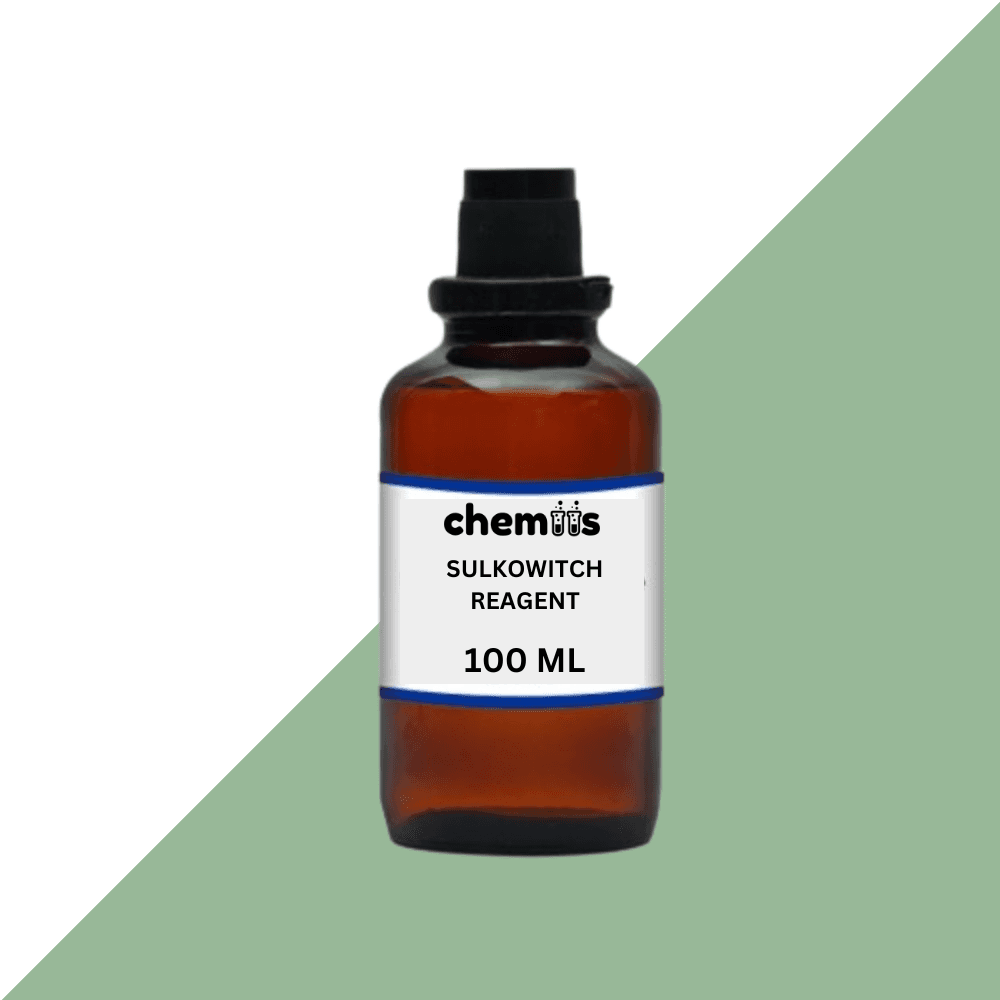Sulkowitch Reagent is a chemical solution commonly used in laboratory settings to test the calcium content in biological samples, particularly in urine. The reagent contains ammonium oxalate, which reacts with calcium to form a precipitate, allowing for the detection of calcium levels. This test is essential for diagnosing and monitoring conditions related to calcium imbalances, such as hypercalcemia or kidney stones.
Applications of Sulkowitch Reagent:
1. Laboratory Testing:
- Calcium Detection in Urine: Sulkowitch Reagent is most commonly used in clinical laboratories for the qualitative or semi-quantitative detection of calcium in urine. When the reagent is added to a urine sample, the calcium ions react with the ammonium oxalate in the reagent to form a white precipitate of calcium oxalate. This reaction provides a simple visual indication of calcium content.
- Monitoring Calcium Levels in Patients: Sulkowitch Reagent is used to monitor calcium levels in patients who may have conditions such as kidney stones, hypercalcemia, or hypocalcemia. It is an essential tool in managing diseases related to abnormal calcium metabolism.
- Testing for Kidney Stones: By measuring the calcium content in urine, the reagent aids in diagnosing kidney stones, particularly those composed of calcium oxalate. This can help in the early detection of individuals at risk of stone formation.
2. Veterinary Applications:
- Calcium Testing in Animals: Sulkowitch Reagent is also used in veterinary diagnostics to test calcium levels in animals’ urine. This helps veterinarians monitor calcium imbalances in animals that could indicate health issues such as metabolic disorders, kidney problems, or bone diseases.
- Evaluation of Dietary and Metabolic Disorders: The reagent can be used to assess the calcium balance in livestock or pets as part of a larger diagnostic panel for metabolic and nutritional disorders, helping veterinarians create appropriate treatment plans.
3. Research Applications:
- Studies on Calcium Metabolism: In research laboratories, Sulkowitch Reagent can be used to study calcium metabolism in different biological systems. Researchers may use it to test the effect of various drugs, supplements, or treatments on calcium excretion and absorption.
- Environmental and Biological Research: Sulkowitch Reagent may be applied in biological or environmental studies to assess calcium content in plants, water, or other biological samples, helping to understand calcium’s role in ecosystems or health.
4. Educational Purposes:
- Teaching Tool in Educational Labs: Sulkowitch Reagent is commonly used in academic laboratories for educational purposes, demonstrating principles of chemical reactions, precipitation, and ion interactions in biological systems. It serves as an effective tool for teaching students about basic chemistry and diagnostic techniques.
Safety with Sulkowitch Reagent:
Sulkowitch Reagent contains ammonium oxalate, which requires careful handling to avoid potential health hazards. The following safety guidelines should be observed when working with Sulkowitch Reagent:
- Toxicity and Irritation: Ammonium oxalate can be harmful if ingested, inhaled, or if it comes into contact with the skin or eyes. It is essential to wear appropriate protective equipment, such as gloves, goggles, and lab coats, when handling the reagent.
- Skin and Eye Protection: Avoid direct contact with the reagent. If the reagent comes in contact with skin or eyes, immediately rinse the affected area with copious amounts of water. If irritation persists, seek medical attention.
- Inhalation Risk: Inhalation of vapors or fine particles from the reagent may cause respiratory irritation. Ensure proper ventilation in the laboratory when using Sulkowitch Reagent. Work in a well-ventilated area or use a fume hood.
- Handling and Storage: Sulkowitch Reagent should be stored in a cool, dry, and well-ventilated area, away from incompatible substances. Keep the container tightly sealed to prevent contamination and degradation of the reagent.
- Disposal: Dispose of Sulkowitch Reagent according to local hazardous waste disposal regulations. Do not dispose of it in regular trash or down the drain. Follow the laboratory’s protocols for safely discarding chemical reagents.
- Spill Management: In case of a spill, wear appropriate protective equipment and clean up the reagent immediately. Use an absorbent material, such as sand or a commercial spill kit, to contain the spill. Dispose of the contaminated material in a designated hazardous waste container.


















Reviews
Clear filtersThere are no reviews yet.